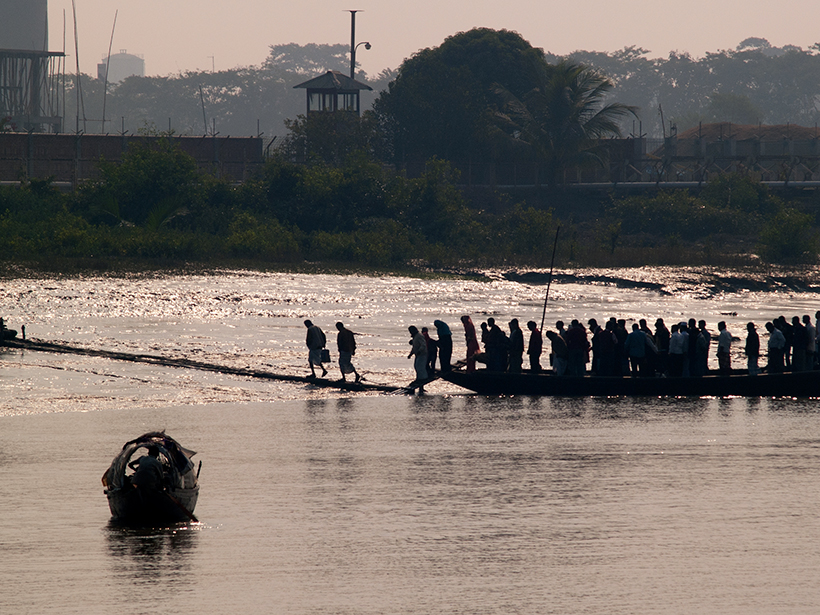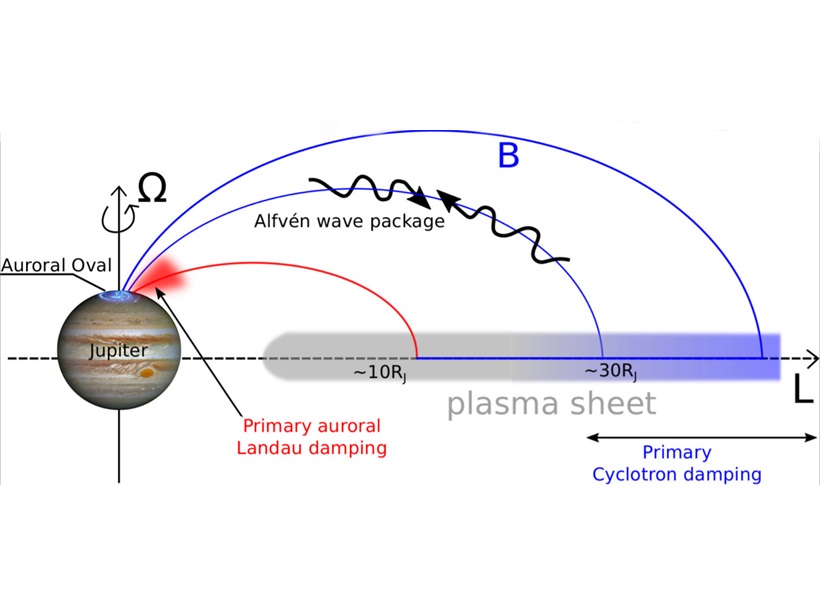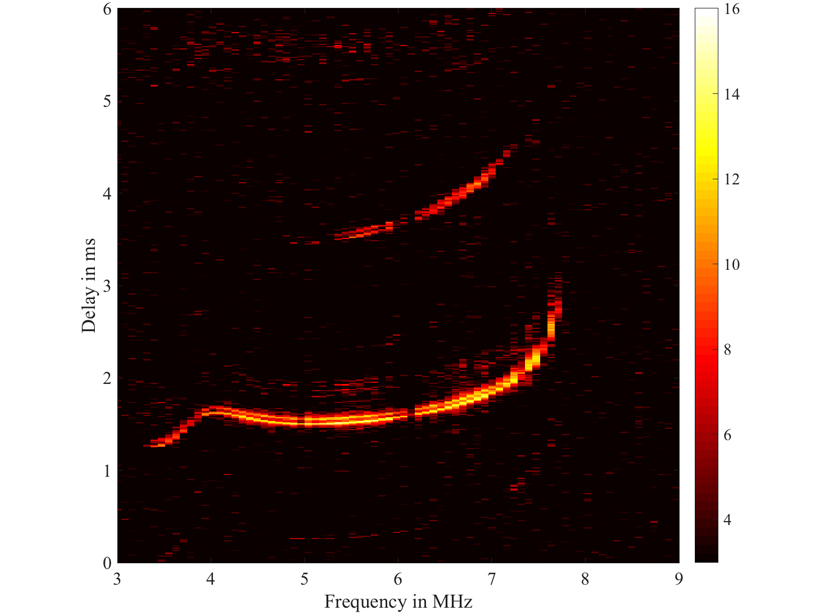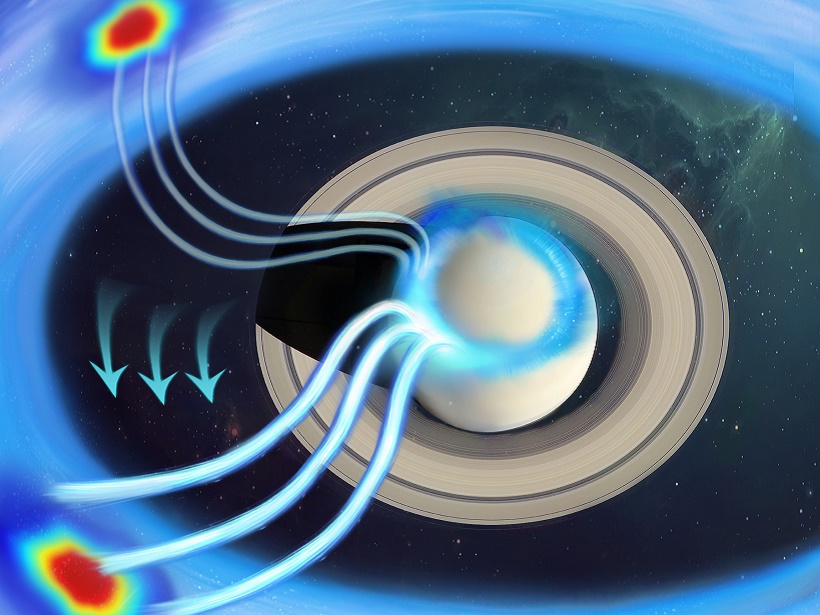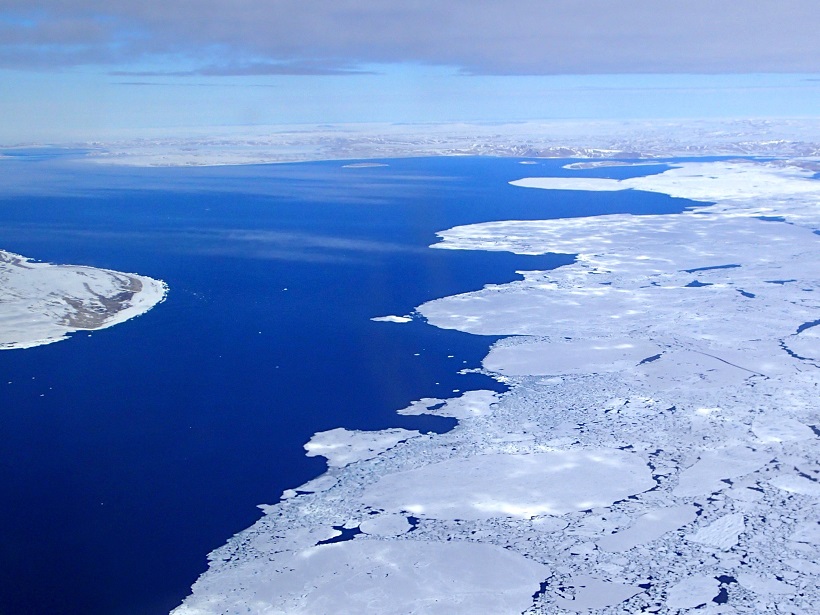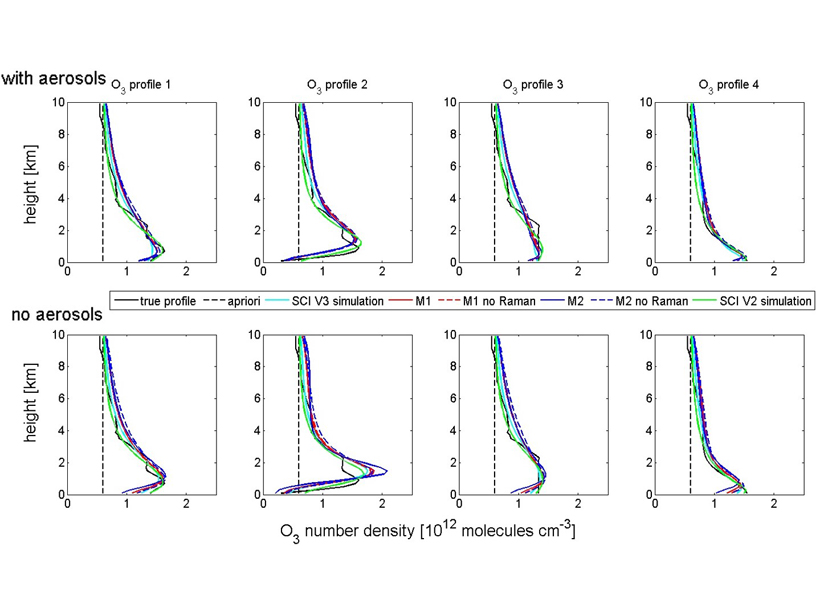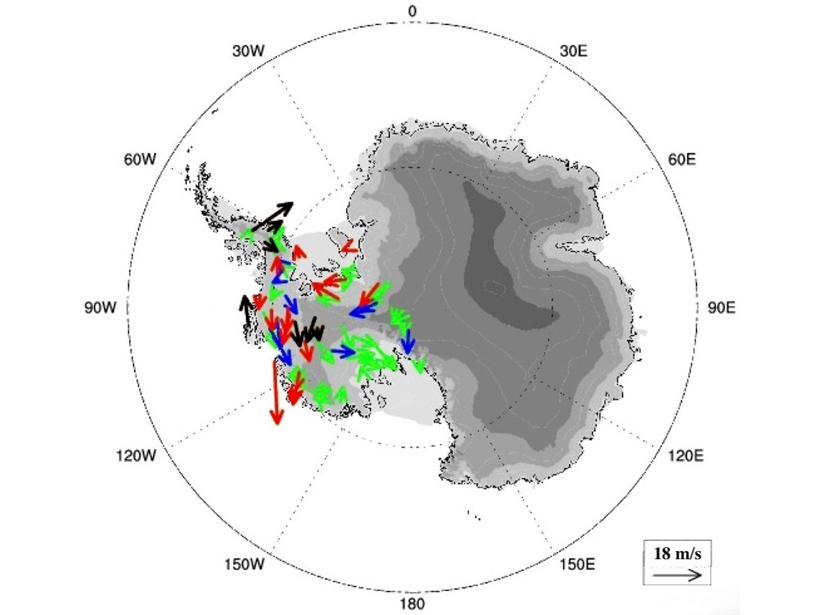How well would your city weather a hurricane? Digitally “moving” past storms to new locations simulates the effects of extreme weather events on local infrastructure.
everything atmospheric
Jupiter’s Stressed Out Magnetosphere Causes Aurora and Heating
Force imbalance between Jupiter’s ionosphere and magnetosphere leads to wave generation to release this stress, but the waves also accelerate particles, causing aurora and heating.
Isaac M. Held Receives 2018 Roger Revelle Medal
Isaac M. Held was awarded the 2018 Roger Revelle Medal at the AGU Fall Meeting Honors Ceremony, held on 12 December 2018 in Washington, D. C. The medal is for “outstanding contributions in atmospheric sciences, atmosphere-ocean coupling, atmosphere-land coupling, biogeochemical cycles, climate or related aspects of the Earth system.”
High Resolution Imaging of Ionosphere by Lightning
The three-dimensional distribution of electron density in the Earth’s ionosphere could be obtained using the broadband radiation of naturally occurring lightning discharges.
Satellite Observations Validate Stratosphere Temperature Models
Since the 1970s, the stratosphere has cooled as ozone levels dropped and carbon dioxide levels increased. Chemical models of the temperature decline conflicted with satellite observations—until now.
Cassini Reveals a Missing Link on Saturn’s Rotating Aurora
The bright aurorae dancing in the sky are produced by charged particles traveling along the magnetic field lines from tens of planetary radii. By why do aurorae rotate at Saturn but not at Earth?
Atmospheric Aerosol in the Changing Arctic
Warming and sea ice loss in the Arctic are affecting the complex interactions between the atmosphere, ocean, land, and ice-covered areas, including the formation and transport of aerosol.
Could Life Be Floating in Venus’s Clouds?
If present, microbes could explain evolving patterns in the planet’s atmosphere when observed in ultraviolet light.
Retrieving Tropospheric Ozone from Ground-based Spectroscopy
A new technique can retrieve the profile of ozone from surface to tropopause by MAX-DOS ground-based measurements.
Dropsondes Reveal Atmospheric Boundary Layers Over Antarctic
636 high-resolution dropsondes reveal four types of atmospheric boundary layer over the Antarctic, including well-mixed and convective types.

